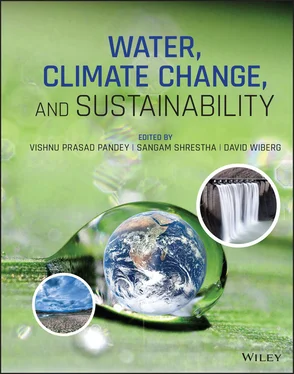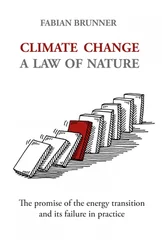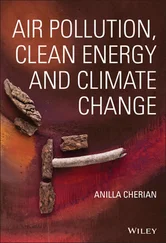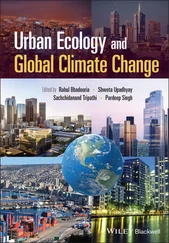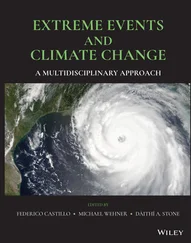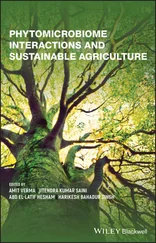1 ...6 7 8 10 11 12 ...26
1.4 INTERDEPENDENCY OF SDGS WITH WATER
Inclusion of SDG6 within the framework of SDGs underscores the important role of water for sustainable development. SDG6 relates to water and includes targets for improving access to sanitation, reducing water pollution, improving water use efficiency, and making water use more sustainable. Water is at the core of SDGs not only because of a standalone water goal but also due to its intrinsic interdependency with the other goals. Water underpins all SDGs in social, economic and environmental dimensions ( Figure 1.3). Water acts as catalyst or enabler for achieving multiple SDGs (UNU/UNOSD 2013). Water with its cascading impacts across the economy, will influence the achievement of other SDGs too; such as those relating to food security (SDG2), cleaner energy (SDG7), health (SDG3), sustainable cities, climate action (SDG 13), and the protection of ecosystems (SDGs 14 and 15). The main rationale for an integrated approach is that water is a shared commodity serving multiple (often competing) purposes such as direct public use and health (such as WASH), food production, energy production, trade of commodities requiring large water footprints, ecosystem sustenance, and water navigation, among others. Many of the water‐related challenges are directly associated with sustainability of multiple sectors ( Table 1.2).
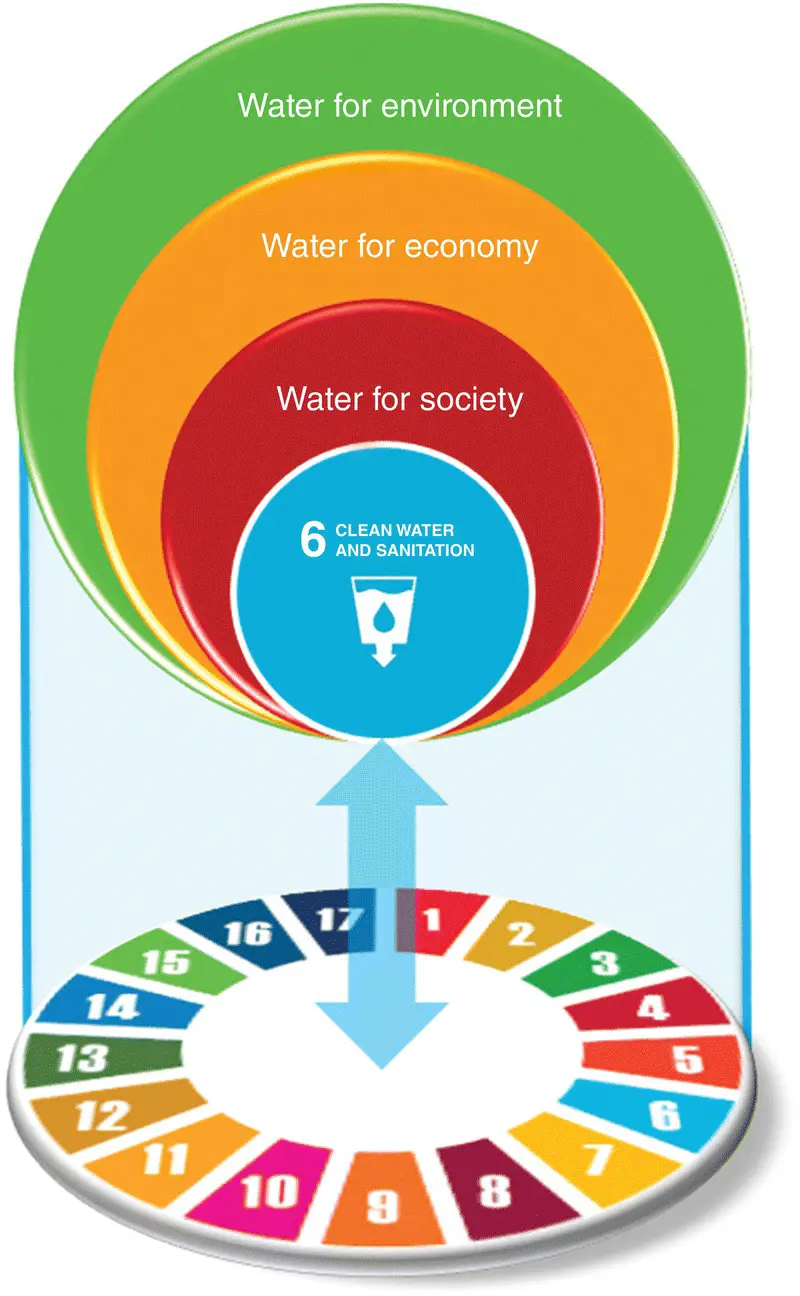
Figure 1.3 Water and SDGs interlinkages across social, economic and environmental dimensions.
Source: Based on Shivakoti, B.R., and M. Bengtsson (2015).
SDG6 is comprehensive in its framing as it touches nearly all dimensions of water security challenges being faced in many localities ( Table 1.4). It covers WASH (Target 6.1, 6.2), water quality and wastewater (Target 6.3), water use and scarcity (Target 6.4), integrated water resources management (IWRM) and transboundary river basin management (Target 6.5), water‐related ecosystems (Target 6.6), and international cooperation and participation (Target 6.a, 6.b). Meanwhile, the water related disasters, which is missing from SDG6, is addressed under SDG11 (Target 11.5). Because of its wider scope, water‐related targets in SDGs are closely interdependent. For instance, materializing Targets 6.1 and 6.2 on universal access to safe drinking water and sanitation need to be accompanied by parallel improvements in ambient water quality (Target 6.3) and water availability (Target 6.4). Conversely, an increase in wastewater treatment (Target 6.3), together with increased access to sanitation (Target 6.2), will support good ambient water quality (SDG6.3), healthy water‐related ecosystems (SDG6.6) and availability of safe drinking water (Target 6.1) (UNESCAP 2017).
Water is arguably among the few sectors where interlinkages are spread across SDGs ( Figure 1‐3). In fact, the whole gamut of SDGs is intrinsically interlinked and interact with one another in a complex fashion. They are integrated and indivisible, and balance the economic, social and environmental dimensions of sustainable development. The 2030 Agenda stresses the importance of “leaving no one behind”, which can only be achieved by understanding interlinkages between the Goals, including SDG6, and taking actions to bring them together (UN‐Water 2016).
Ever since the adoption of the 2030 Agenda, the interlinkage among SDGs has been in the spotlight due to its strong implications on the prioritization of actions and their effective implementation (Weitz et al. 2018). Yet, understanding the linkages in a given context is challenging due to the absence of well‐defined indicators or metrics with reliable and trackable data for the structural analysis of the SDG network (Zhou and Moinuddin 2017). Several models have been suggested to advance the conceptual understanding of the linkages among the SDGs, while some of them have also attempted to analyze them (Zhou and Moinuddin 2017; Pradhan et al. 2017; Elder and King 2018; Nilsson et al. 2018; Shivakoti, 2019). For instance, Nilsson et al. (2018) have proposed an analytical framework consisting of seven interactions to assess the positive (co‐benefits), neutral, and negative (trade‐off) outcomes that could emerge between SDGs. Three of the interactions (indivisible, reinforcing, enabling) are positive, one neutral (consistent), and three others (constraining, counteracting and cancelling) are negative.
In the SDGs framework, water could be an entry point for unlocking many of the interlinkages and managing interactions by capitalizing on positive ones and nullifying the negatives. Abundant water supplies are vital for attaining SDG2 on food security; clean and safe drinking water and sanitation systems are necessary for SDG3 (health) and SDG5 (gender); and water is needed for powering industries and creating the new jobs identified in SDGs 7 and 8. Furthermore, none of them are achievable without adequate and safe water to nourish the planet’s life‐sustaining ecosystem services identified in SDGs 13, 14 and 15. A qualitative comparison between water goal and rest of the 16 SDGs can show obvious connections ( Table 1.5). The vision articulated in the SDGs is high on ambition and will call for a fundamental shift in the way water is managed, far beyond business‐as‐usual remedies. It will require better coordination between sectors that are impacted by a nexus that emerges through the use of water as the common factor of production.
Table 1.4 Targets and indicators of SDG6. Source: Modified from UN (2020).
| Goal 6: Ensure Availability and Sustainable Management of Water and Sanitation for All |
| Targets |
Indicators |
| 6.1: By 2030, achieve universal and equitable access to safe and affordable drinking water for all |
6.1.1: Proportion of population using safely managed drinking water services |
| 6.2: By 2030, achieve access to adequate and equitable sanitation and hygiene for all and end open defecation, paying special attention to the needs of women and girls and those in vulnerable situations |
6.2.1 Proportion of population using safely managed sanitation services, including a hand‐washing facility with soap and water |
| 6.3: By 2030, improve water quality by reducing pollution, eliminating dumping and minimizing release of hazardous chemicals and materials, halving the proportion of untreated wastewater and substantially increasing recycling and safe reuse globally |
6.3.1 Proportion of wastewater safely treated |
| 6.3.2 Proportion of bodies of water with good ambient water quality |
| 6.4: By 2030, substantially increase water‐use efficiency across all sectors and ensure sustainable withdrawals and supply of freshwater to address water scarcity and substantially reduce the number of people suffering from water scarcity |
6.4.1 Change in water‐use efficiency over time |
| 6.4.2 Level of water stress: freshwater withdrawal as a proportion of available freshwater resources |
| 6.5: By 2030, implement integrated water resources management at all levels, including through transboundary cooperation as appropriate |
6.5.1 Degree of integrated water resources management implementation (0‐100) |
| 6.5.2 Proportion of transboundary basin area with an operational arrangement for water cooperation |
| 6.6: By 2020, protect and restore water‐related ecosystems, including mountains, forests, wetlands, rivers, aquifers, and lakes |
6.6.1 Change in the extent of water‐related ecosystems over time |
| 6.a: By 2030, expand international cooperation and capacity‐building support to developing countries in water‐ and sanitation‐related activities and programs, including water harvesting, desalination, water efficiency, wastewater treatment, recycling, and reuse technologies |
6.a.1 Amount of water‐ and sanitation‐related official development assistance that is part of a government‐coordinated spending plan |
| 6.b Support and strengthen the participation of local communities in improving water and sanitation management |
6.b.1 Proportion of local administrative units with established and operational policies and procedures for participation of local communities in water and sanitation management |
1.5. CONSIDERATIONS FOR ACHIEVING THE SDGS
Читать дальше
